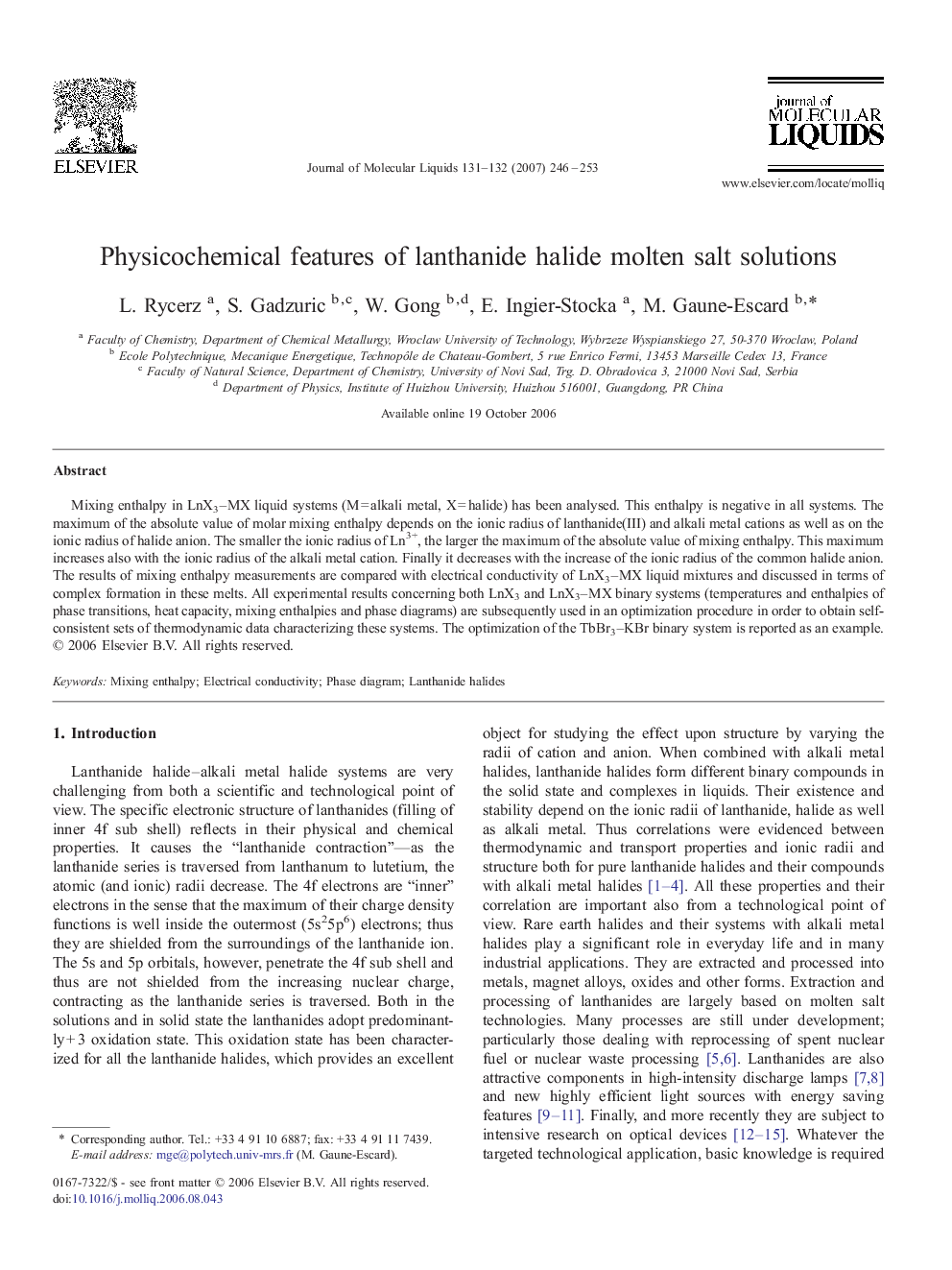| Article ID | Journal | Published Year | Pages | File Type |
|---|---|---|---|---|
| 5413630 | Journal of Molecular Liquids | 2007 | 8 Pages |
Abstract
Mixing enthalpy in LnX3-MX liquid systems (MÂ =Â alkali metal, XÂ =Â halide) has been analysed. This enthalpy is negative in all systems. The maximum of the absolute value of molar mixing enthalpy depends on the ionic radius of lanthanide(III) and alkali metal cations as well as on the ionic radius of halide anion. The smaller the ionic radius of Ln3+, the larger the maximum of the absolute value of mixing enthalpy. This maximum increases also with the ionic radius of the alkali metal cation. Finally it decreases with the increase of the ionic radius of the common halide anion. The results of mixing enthalpy measurements are compared with electrical conductivity of LnX3-MX liquid mixtures and discussed in terms of complex formation in these melts. All experimental results concerning both LnX3 and LnX3-MX binary systems (temperatures and enthalpies of phase transitions, heat capacity, mixing enthalpies and phase diagrams) are subsequently used in an optimization procedure in order to obtain self-consistent sets of thermodynamic data characterizing these systems. The optimization of the TbBr3-KBr binary system is reported as an example.
Related Topics
Physical Sciences and Engineering
Chemistry
Physical and Theoretical Chemistry
Authors
L. Rycerz, S. Gadzuric, W. Gong, E. Ingier-Stocka, M. Gaune-Escard,
